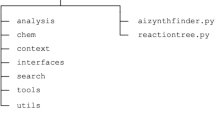The 'duplication' strategy for the further enrichment of an already enantiomerically-enriched mixture consists of the formation of all the three possible 'dimeric' diastereomers, i.e., (R)–X–(R), (R)–X–(S) and (S)–X–(S), where X is an appropriate spacer that can be readily cleaved to yield the original enantiomers. The mixture of (R)–X–(R) and (S)–X–(S) thus obtained would be of higher enantiomeric excess (e.e.) as compared to the original mixture, on the basis of a simple kinetic scheme. The success of the strategy is experimentally well-established, but is apparently based on the (unproven) assumption that the theoretically-derived rate ratios are identical to the experimentally observed product ratios. Although the detailed kinetic treatment for a system such as the above is extremely complex, it is possible to show (mathematically) that the above assumption is indeed justified when all the three diastereomers are formed without chiral discrimination (as assumed in the strategy).
Similar content being viewed by others
Rights and permissions
About this article
Cite this article
Chandrasekhar, S. Basis of the 'duplication' strategy for enhancing the enantiomeric excess in chiral resolutions: proof of the equivalence of rate and product ratios. Res Chem Intermediat 31, 779–783 (2005). https://doi.org/10.1163/156856705774576155
Published:
Issue Date:
DOI: https://doi.org/10.1163/156856705774576155




